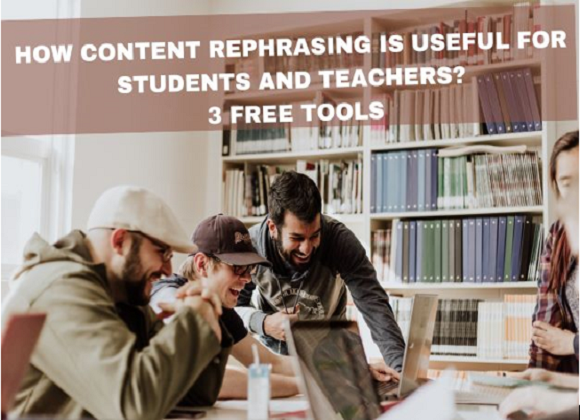Courses
Grow skills with quality courses
There are several models of discipline by different theorists. However, they can be broadly categorized as (a) low approach, with a low degree of teacher control and a high degree of student control; (b) medium approach, with a medium degree of approach for both; and (c) high, with a high degree of teacher control and low degree of student control.
Fay and Funk/ Low-control/Guiding model
Jim Fay and David Funk focus on “creating a classroom environment in which students can develop their own self-discipline and independent problem-solving skills” (Models of Discipline Low Approach, n.d.). The objective is for teachers to learn “techniques to avoid arguments and power struggles”, (Delosio, 2008). These are based on 9 essential skills for teachers which are,“(a) Neutralizing student arguing, (b) Delaying consequence, (c) Empathy, (d) The recovery process, (e) Developing positive teacher-student relationships, (f) Setting limits with enforceable statements, (g) Using choices to prevent power struggles, (h) Quick and easy preventative interventions and (i) Guiding students to own and solve their problems”, (Delosio, 2008).
Some of the advantages of this are, (a) students have low stress, (b) better relations with teachers, (c) giving choices to the students, and (d) having a space where students are responsible. Hence “students can develop their own self-discipline and independent problem-solving skills”, (Models of DisciplineLow Approach, n.d.).
While it may look very idyllic, as an experienced I can see some issues. This is a very pro-student model, in the sense that there are a lot of choices given to the student with the aim of using the space by students to discover themselves. Dialogue is the base of relationships. It requires intense teacher development into reflective human beings. Its main base is ‘empathy’ and that is a value that takes a lot of life experience to build. There are also situations where students are not ready for a space that is so open and might actually get insecure.
For example, at times students requested me to give them specific instructions while I wanted them to think for themselves. The students did not do very well with me, but when they moved on to a structured, they did very well. If the objective is that students ought to be secure in the class, then the means can be defined by the situation, and clinging to a model might be detrimental.
Lee and Marlene Canter/High-Control/Assertive Discipline
In 1976, when Canters came out with Assertive Discipline, it brought “overnight relief to teachers everywhere”, (Charles & Senter, 2005).
“Canter maintains that teachers have the right and responsibility to (a) establish rules and directions that clearly define the limits of acceptable and unacceptable student behavior; (b) teach these rules and directions, and (c) ask for assistance from parents and administrators when support is needed in handling the behavior of students”, (Models of Discipline High Approach, n.d.).
Several times we forget that teachers have rights too. I have encountered in my career instances when the head of school would insist on me stepping back in a situation, where it would be clear that the student needed to be reprimanded. Or asked to build a better relationship. My right to have a classroom with discipline was ignored.
Assertive discipline is a very pro-teacher model, in the sense that the chief responsibility for maintaining discipline is on the teacher, however humanely. Taken in extreme it could lead to a situation where the teacher forgets the ‘humane’ bit in the principals given by the Canters and turn it into a power zone.
Canters believe that “students need structure and clearly defined limits on behavior”, (Charles & Senter, 2005). This resonates with me. When I was teaching, there were several students who responded very well to it. They were not mature enough to control their impulses and welcomed the intervention.
Comparing both the models
Canter’s Assertive Discipline is “A classroom control strategy that places teachers humanely in charge of the classroom”, (Charles & Senter, 2005). The word ‘humanely’ is the point of contact between the two models. Each believes, “consequences must be enforced, it should be done in a way that creates a positive teacher-student relationship”, (Troika, 2013).
Both models have rules, and consequences when the rules are broken. In the ‘Love and Logic’ way, the consequence would be a dialogue between the teacher and the student. In the ‘Assertive Discipline’ way, it would be the teacher telling the students exactly where the student went wrong.
My model
For my discipline philosophy what works best is, to begin with, Assertive Discipline, with an aim to move to Love and Logic. My classroom philosophy stems from establishing a dialogue with the student. I am not yet so confident in my capacity to trust the students to apply the principles of Love and Logic. I am also not so confident in my own skill of empathy for all students. I need to work to bring them to the point of dialogue.
Conclusion
A classroom group for me is a group of 30 very diverse students. To go full throttle into Love and Logic may be detrimental to students. I would prefer to (a) use the space given to me by Assertive Discipline to (b) set some ground rules, (c) win the trust and respect of students, (d) trust them in turn, and then (e) relax the space to the greater freedom as taught within the Love and Logic framework.
That makes me feel safe.
About the author
 |
Monica Kochar started her career as a Maths teacher in 1993. She has years of experience as a Maths Curriculum Designer with leading education platforms. This write-up has been reproduced from ' Humane Maths ' with the Author's consent. Any views expressed are personal. |
Comments
Recommended by Gurushala

Technology & Innovation
-By Valentina MilanovaHow Content Rephrasing is Useful for Students and Teachers? 3 Free Tools

Stories of Indian Classrooms
-By GurushalaOn the course of continuous learning- An inspiring teacher story from Pune
Related Articles
